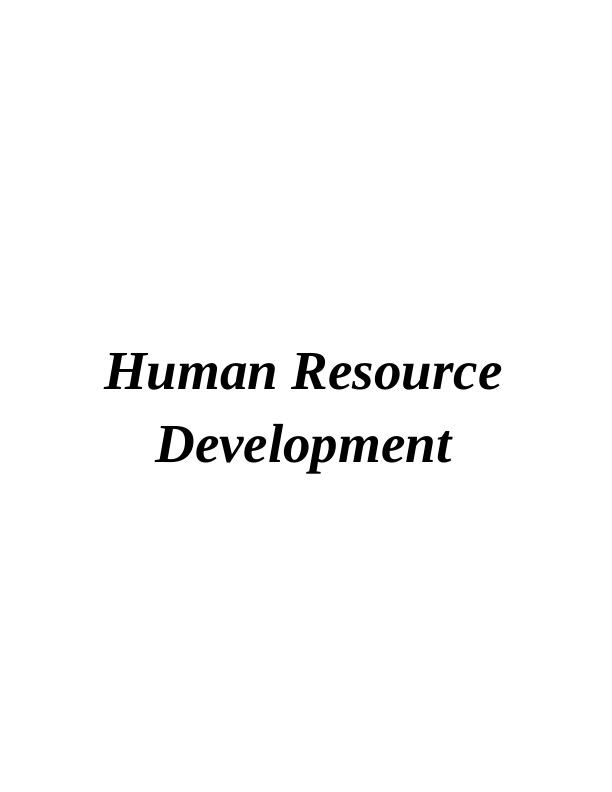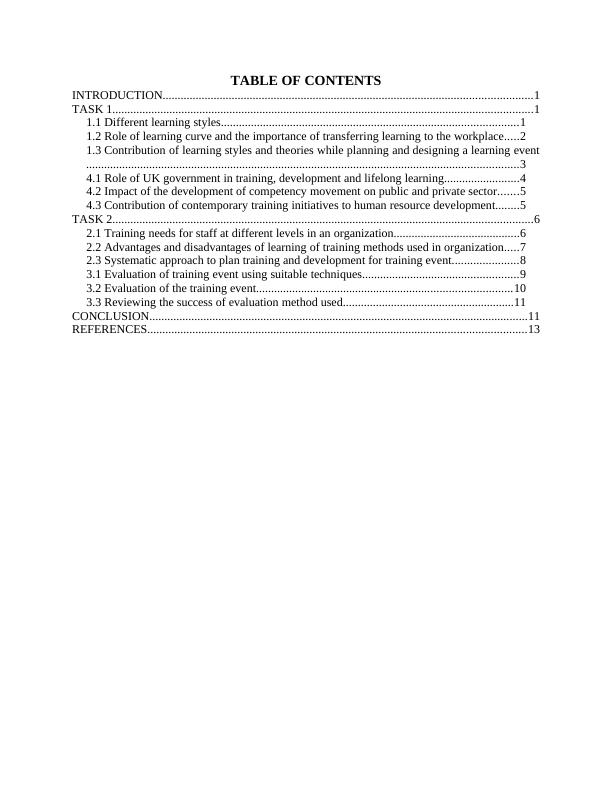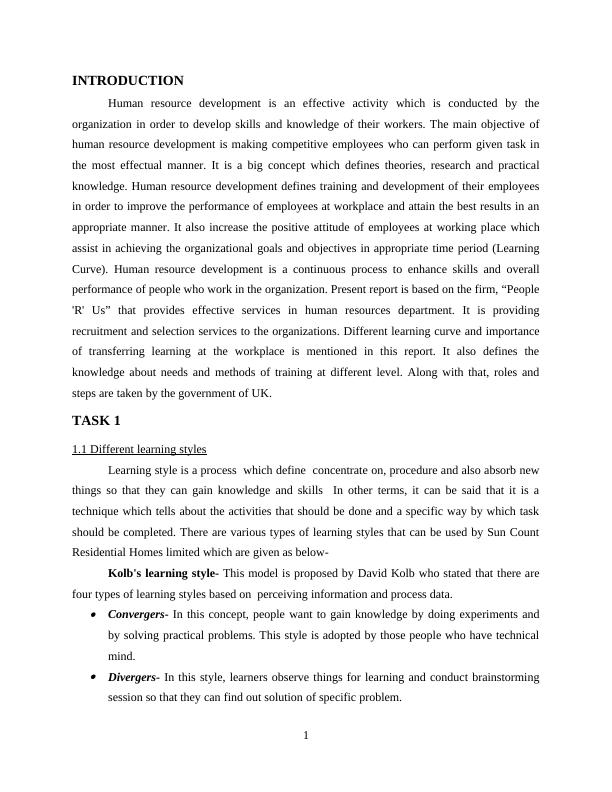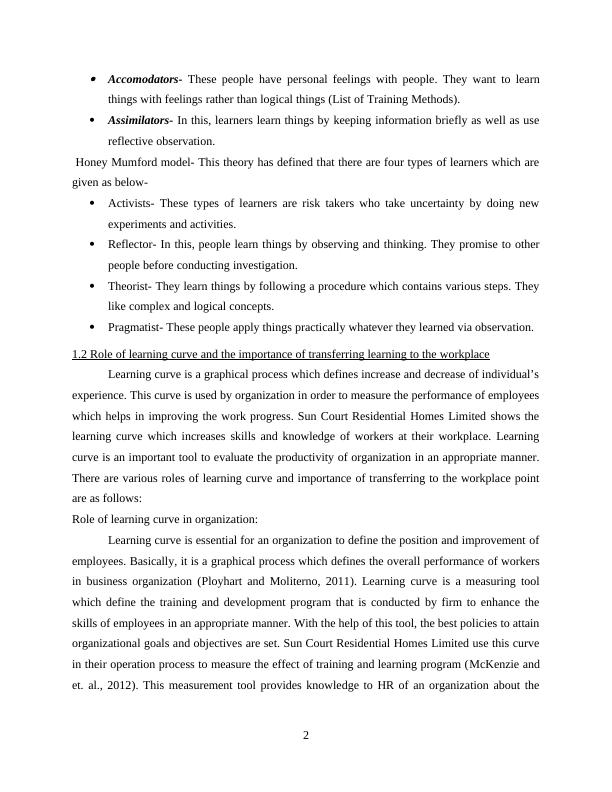TABLE OF CONTENTS INTRODUCTION 1 TASK 11
15 Pages5042 Words49 Views
Added on 2020-06-04
About This Document
Human Resource Development TABLE OF CONTENTS INTRODUCTION 1 TASK 11 1.1 Different learning styles 1 1.2 Role of learning curve and the importance of transferring learning to the workplace 2 1.3 Contribution of learning styles and theories while planning and designing a learning event3 4.1 Role of UK government in training, development and lifelong learning 4 4.2 Impact of the development of competency movement on public and private sector5 4.3 Contribution of contemporary training initiatives to human resource development 5 TASK 26 2.1 Training needs for staff at different levels in
TABLE OF CONTENTS INTRODUCTION 1 TASK 11
Added on 2020-06-04
ShareRelated Documents
End of preview
Want to access all the pages? Upload your documents or become a member.
Role of Learning Curve and Importance
|15
|4856
|209
Human Resource Development of Marks and Spencer
|24
|6290
|196
Human Resource Development INTRODUCTION
|8
|1508
|489
Human Resource Development PDF
|16
|5211
|36
Human Resource Development : People R Us
|15
|5243
|29
Report on Learning Theories and Learning Styles
|16
|5069
|71




